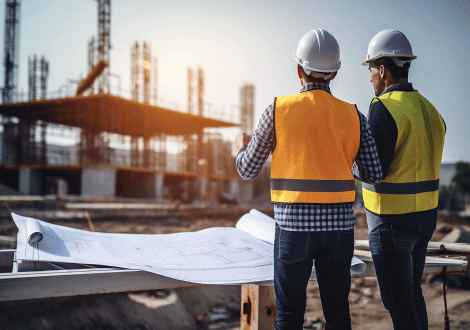Construction & Engineering
In the realm of construction and engineering, innovation is the cornerstone of progress. Among the latest tools revolutionizing these industries are HC Robotics drones. These unmanned aerial vehicles (UAVs) have swiftly transformed from novelty gadgets to indispensable assets, offering a plethora of benefits to construction and engineering projects. From surveying vast landscapes to monitoring construction progress with unparalleled precision, HC Robotics drones are reshaping the way we build and design our world.
Efficient Survey and Mapping:
Drones have become invaluable for surveying and mapping terrains, offering a faster and more accurate alternative to traditional methods. Equipped with high-resolution cameras and advanced sensors, drones can capture detailed aerial imagery of construction sites, providing engineers with comprehensive data for site analysis and planning. This capability is particularly advantageous for large-scale projects where manual surveying would be time-consuming and labor-intensive.
Improved Safety Measures:
Safety is paramount in construction and engineering projects, and drones play a significant role in enhancing safety measures. By deploying drones for site inspections and monitoring, project managers can identify potential hazards and safety violations without putting workers at risk. Drones can access hard-to-reach or hazardous areas, such as tall structures or unstable terrain, reducing the need for personnel to perform risky tasks.

Enhanced Project Management:
Drones offer real-time insights into construction progress, enabling project managers to monitor developments remotely. Through aerial footage and data collected by drones, stakeholders can track construction milestones, identify bottlenecks, and ensure adherence to project timelines. This proactive approach to project management facilitates better decision-making and resource allocation, ultimately improving project efficiency and cost-effectiveness.
Precision in Design and Planning: The data gathered by drones not only aids in surveying and monitoring but also facilitates precision in design and planning. By integrating drone-generated imagery and topographic data into Building Information Modeling (BIM) software, engineers can create detailed 3D models of construction sites. These models allow for better visualization of the project, aiding in design optimization, clash detection, and coordination among different trades.
Environmental Impact Assessment: Construction and engineering projects often have environmental implications, and drones can assist in assessing and mitigating these impacts. Drones equipped with specialized sensors, such as LiDAR or thermal cameras, can analyze vegetation, detect soil erosion, and monitor wildlife habitats. This data helps project teams make informed decisions to minimize environmental disturbances and comply with regulatory requirements.
In conclusion, HC Robotics drones have emerged as indispensable tools in the construction and engineering sectors, offering a myriad of benefits ranging from improved efficiency and safety to enhanced project management and environmental stewardship. As technology continues to evolve, HC Robotics drones will likely play an even greater role in shaping the future of construction and engineering, driving innovation and unlocking new possibilities for sustainable development. Embracing the utility of drones is not just a choice but a necessity for staying competitive in an increasingly dynamic and demanding industry landscape.
